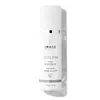What's inside
What's inside
 Key Ingredients
Key Ingredients

 Benefits
Benefits

 Concerns
Concerns

 Ingredients Side-by-side
Ingredients Side-by-side

Water
Skin ConditioningVaccinium Myrtillus Fruit Extract
Skin ConditioningAloe Barbadensis Leaf Juice
Skin ConditioningCetyl Ethylhexanoate
EmollientGlycerin
HumectantCetyl Alcohol
EmollientGlyceryl Stearate
EmollientPEG-100 Stearate
Squalane
EmollientSaccharum Officinarum Extract
MoisturisingDimethicone
EmollientStearic Acid
CleansingMagnesium Aluminum Silicate
AbsorbentCitrus Aurantium Dulcis Fruit Extract
MaskingCitrus Limon Fruit Extract
MaskingAcer Saccharum Extract
Skin ConditioningSalicylic Acid
MaskingAlthaea Officinalis Root Extract
Skin ConditioningChamomilla Recutita Flower Extract
MaskingHydrolyzed Soy Protein
HumectantTocopheryl Acetate
AntioxidantAscorbyl Palmitate
AntioxidantPanthenol
Skin ConditioningBisabolol
MaskingPolysorbate 20
EmulsifyingPolyacrylate-13
Polyisobutene
Butylene Glycol
HumectantXanthan Gum
EmulsifyingAminomethyl Propanol
BufferingPhenoxyethanol
PreservativeEthylhexylglycerin
Skin ConditioningPotassium Sorbate
PreservativeWater, Vaccinium Myrtillus Fruit Extract, Aloe Barbadensis Leaf Juice, Cetyl Ethylhexanoate, Glycerin, Cetyl Alcohol, Glyceryl Stearate, PEG-100 Stearate, Squalane, Saccharum Officinarum Extract, Dimethicone, Stearic Acid, Magnesium Aluminum Silicate, Citrus Aurantium Dulcis Fruit Extract, Citrus Limon Fruit Extract, Acer Saccharum Extract, Salicylic Acid, Althaea Officinalis Root Extract, Chamomilla Recutita Flower Extract, Hydrolyzed Soy Protein, Tocopheryl Acetate, Ascorbyl Palmitate, Panthenol, Bisabolol, Polysorbate 20, Polyacrylate-13, Polyisobutene, Butylene Glycol, Xanthan Gum, Aminomethyl Propanol, Phenoxyethanol, Ethylhexylglycerin, Potassium Sorbate
Water
Skin ConditioningGlycolic Acid
BufferingAmmonium Laureth Sulfate
CleansingAmmonium Lauryl Sulfate
CleansingAmmonium Hydroxide
BufferingGlycerin
HumectantCocamidopropyl Hydroxysultaine
CleansingPhenoxyethanol
PreservativeGlycol Distearate
EmollientLaureth-10
EmulsifyingCaprylyl Glycol
EmollientAmmonium Sulfate
Ammonium Chloride
BufferingMenthol
MaskingAloe Barbadensis Leaf Juice
Skin ConditioningEthylhexylglycerin
Skin ConditioningHexylene Glycol
EmulsifyingHydroxypropyl Methylcellulose
Emulsion StabilisingSodium Benzoate
MaskingSodium Chloride
MaskingGlyoxal
AntimicrobialRosmarinus Officinalis Leaf Extract
AntimicrobialWater, Glycolic Acid, Ammonium Laureth Sulfate, Ammonium Lauryl Sulfate, Ammonium Hydroxide, Glycerin, Cocamidopropyl Hydroxysultaine, Phenoxyethanol, Glycol Distearate, Laureth-10, Caprylyl Glycol, Ammonium Sulfate, Ammonium Chloride, Menthol, Aloe Barbadensis Leaf Juice, Ethylhexylglycerin, Hexylene Glycol, Hydroxypropyl Methylcellulose, Sodium Benzoate, Sodium Chloride, Glyoxal, Rosmarinus Officinalis Leaf Extract
Ingredients Explained
These ingredients are found in both products.
Ingredients higher up in an ingredient list are typically present in a larger amount.
Aloe Barbadensis Leaf Juice comes from leaves of the aloe plant. Aloe Barbadensis Leaf Juice is best known for helping to soothe sunburns. It is also anti-inflammatory, moisturizing, antiseptic, and can help heal wounds.
Aloe is packed with good stuff including Vitamins A, C, and E. These vitamins are antioxidants, which help fight free-radicals and the damage they may cause. Free-radicals are molecules that may damage your skin cells, such as pollution.
Aloe Barbadensis Leaf Juice also contains sugars. These sugars come in the form of monosaccharides and polysaccharides, folic acid, and choline. These sugars are able to help bind moisture to skin.
It also contains minerals such as calcium, 12 anthraquinones, fatty acids, amino acids, and Vitamin B12.
Learn more about Aloe Barbadensis Leaf JuiceEthylhexylglycerin (we can't pronounce this either) is commonly used as a preservative and skin softener. It is derived from glyceryl.
You might see Ethylhexylglycerin often paired with other preservatives such as phenoxyethanol. Ethylhexylglycerin has been found to increase the effectiveness of these other preservatives.
Glycerin is already naturally found in your skin. It helps moisturize and protect your skin.
A study from 2016 found glycerin to be more effective as a humectant than AHAs and hyaluronic acid.
As a humectant, it helps the skin stay hydrated by pulling moisture to your skin. The low molecular weight of glycerin allows it to pull moisture into the deeper layers of your skin.
Hydrated skin improves your skin barrier; Your skin barrier helps protect against irritants and bacteria.
Glycerin has also been found to have antimicrobial and antiviral properties. Due to these properties, glycerin is often used in wound and burn treatments.
In cosmetics, glycerin is usually derived from plants such as soybean or palm. However, it can also be sourced from animals, such as tallow or animal fat.
This ingredient is organic, colorless, odorless, and non-toxic.
Glycerin is the name for this ingredient in American English. British English uses Glycerol/Glycerine.
Learn more about GlycerinPhenoxyethanol is a preservative that has germicide, antimicrobial, and aromatic properties. Studies show that phenoxyethanol can prevent microbial growth. By itself, it has a scent that is similar to that of a rose.
It's often used in formulations along with Caprylyl Glycol to preserve the shelf life of products.
Water. It's the most common cosmetic ingredient of all. You'll usually see it at the top of ingredient lists, meaning that it makes up the largest part of the product.
So why is it so popular? Water most often acts as a solvent - this means that it helps dissolve other ingredients into the formulation.
You'll also recognize water as that liquid we all need to stay alive. If you see this, drink a glass of water. Stay hydrated!
Learn more about Water